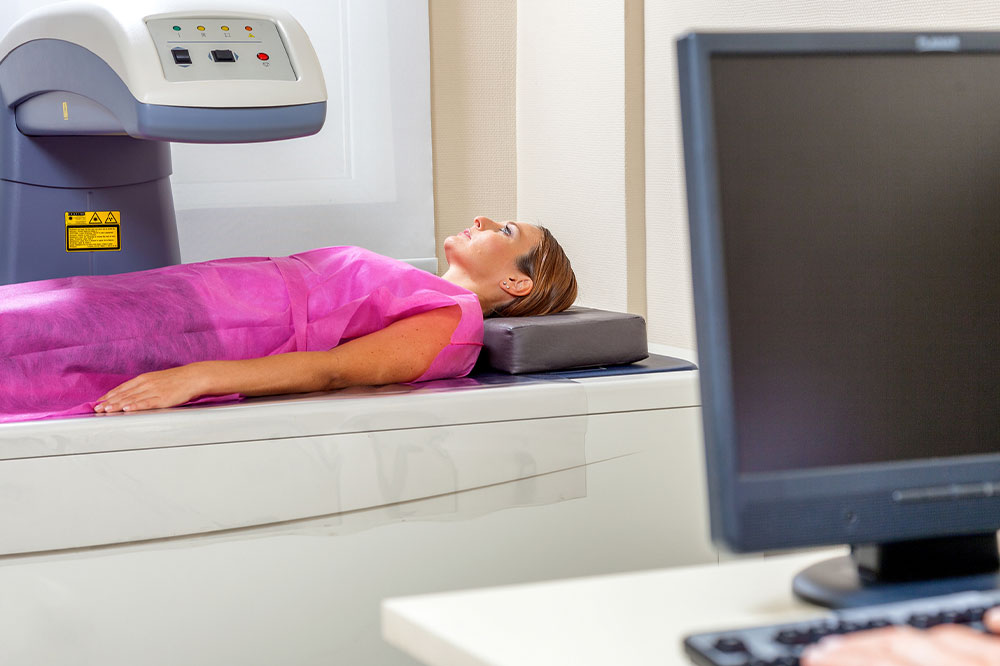
What to know about a bone density test procedure
Also known as the DEXA scan, the bone density test procedure is a low-dose X-ray test that evaluates bone minerals and calcium levels. It helps assess its thickness and strength. As we grow older, the bones become thinner, and when this exceeds the normal limit, it is called osteopenia. This condition aggravates your risk of osteoporosis, which is more serious. Read on to learn about the bone density test procedure in detail.
What is the purpose of the bone density test procedure?
Doctors perform the bone density procedure for the following reasons:
Assessing the risk of broken bones or fractures
To identify a decline in bone density before you break a bone
To confirm the osteoporosis diagnosis
To check whether the treatment is working
Naturally, the higher the bone mineral density content, the denser the bones. Further, the denser the bones are, the less likely they are to break. Bone density tests are not the same as bone scans. In bone scans, you will get an injection before the test. The purpose of the scans is usually to detect infections, bone abnormalities, cancer, and fracture.
Even though osteoporosis is prevalent amongst older women, men might also develop it. Regardless of your sex and age, the doctor might recommend the test in the following cases:
A drop in the hormone levels
Beyond the natural decline in the hormones post-menopause, women’s estrogen levels might also drop during some cancer treatments. Similarly, treatment for prostate cancer can lower testosterone levels in men. The presence of lower sex hormones can weaken the bone.
Ongoing treatments
Some long-term treatment options can intervene with the bone-building process, resulting in osteoporosis.
Fractured bone
You experience fragility fractures when the bone becomes so fragile that it breaks more easily than the norm. Sometimes, these fractures may be caused by a strong sneeze or cough.
Lost height
Compression fractures can result in losing at least 3.8 cm in height. Osteoporosis is the prime culprit behind it.
What to expect?
If it is your first time undergoing this procedure, you might not know what to expect. However, there is no need to worry since it is a fast and painless process. You lie flat on your back on an open X-ray table for the scan. Across the test, stay still to ensure the images are not blurred. A radiographer or a specialist in taking X-ray images will perform this scan. A giant scanning arm goes through the body, moving slowly across, releasing a low-dose, narrow X-ray beam through the part of the body examined. For osteoporosis, it will usually be the lower spine and hip for weak bone assessment. However, since bone density may differ across the body, the specialist will scan more than one body part.
Alternatively, the forearm is scanned if spine or hip scans are not possible or for some health problems like hyperparathyroidism. Some X-rays passed through the body are absorbed by tissue like bone and fat. The machine measures the number of X-rays that have passed across the body; this information helps generate an image of the scanned part. Typically, the scan takes only 10-20 minutes, and you can go home after the scan is over.
Preparation
Here’s what you need to do before undergoing the bone density exam:
Do not take any calcium supplement on the day prior.
If you have a contrast dye or a barium injection for an MRI or CT scan, wait at least a week before undergoing the central DXA. The contrast dye might intervene with the bone density test.
Do not wear clothes with metal buttons, belts, or zippers.
Beyond this, there is nothing much you need to do. The procedure does not put you at any risk. You get exposed to low radiation levels, much lesser than in an airplane flight or a chest X-ray.
Cost
If you pay for the DEXA scan out of your pocket, you can expect to bear a cost of around $160-$325. Typically, insurance companies pay for this test if instructed by the physician or when you have several risk factors. So check with your insurance company to know if it is covered.




